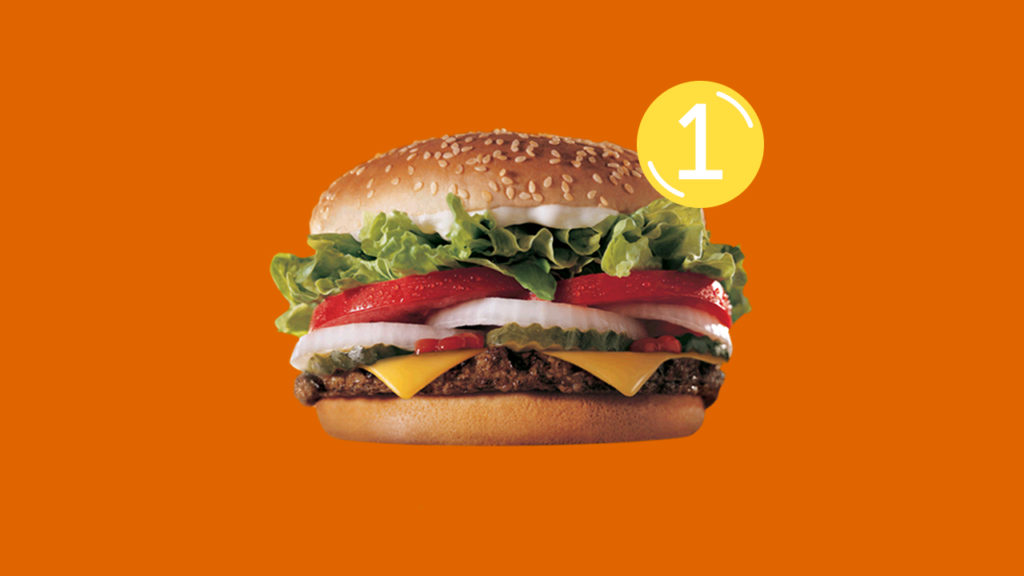Burger King is offering Whopper sandwiches for a penny, but consumers have to get near a McDonald’s to unlock the deal. This unusual offer leverages the disparity between the number of Burger King versus McDonald’s locations, thus turning a hindrance into a tactical advantage.
Beginning on Tuesday, hungry consumers can open the newly revamped Burger King app and venture within 600 feet of a McDonald’s location. Doing so will trigger a deal within a geofence, allowing them to order a Whopper for one penny. Consumers are then directed to the nearest Burger King location for pick up. The promotion, dubbed #WhopperDetour, will run for a limited time through December 12.
Geofencing uses GPS or RFID technology to map out an area of choice, allowing brands to trigger an event once a user enters. HBO used RFID wristbands to send shareable Game of Thrones content to visitors at San Diego Comic-Con last year, for example. Aside from the occasional coupon, the technology is still finding its marketing footing. Burger King is offering a coupon, sure, but using geofencing around a competitor’s location is definitely a unique way of utilizing the tech.
The quick-witted quick service restaurant “announced” the promotion with a cryptic tweet that quickly earned over 15,000 likes and 4,600 retweets. An hour later, Burger King launched the promotion with the slogan, “The Whopper Detour: Only ‘at’ McDonald’s.”
https://twitter.com/BurgerKing/status/1069969574597058560
Sending your customers to your biggest rival sounds counter-intuitive, but consider the fact that Burger King has around 6,600 locations in the US compared to McDonald’s’ 14,000+. According to parent company Restaurant Brands International (RBI), Burger King experienced growth of seven percent in Q3, with new restaurants popping up at just over six percent.
The promotion makes it easier to unlock the deal than sending them directly to Burger King, while allowing consumers to join in the brand’s competitiveness.
When it comes to Burger King marketing, their motto seems to be, “it’s so crazy that it just might work!” It often does.
Just look at the series of gibberish tweets the restaurant sent last week. A series of random characters managed to go viral—something even the most carefully planned campaigns often fail to achieve—before Burger King revealed the return of its Cini Minis.
RBI recently unveiled a new, modern “Burger King of Tomorrow” restaurant image with plans to roll out across the US. Part of the connected experience includes mobile ordering.
